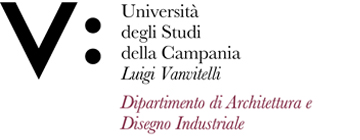Adriana ROSSI
Insegnamento di TECNICHE AVANZATE DELLA RAPPRESENTAZIONE (MOD. 1)
Corso di laurea magistrale in INGEGNERIA CIVILE
SSD: ICAR/17
CFU: 6,00
ORE PER UNITÀ DIDATTICA: 48,00
Periodo di Erogazione: Secondo Semestre
Italiano
| Lingua di insegnamento | ITALIANO |
| Contenuti | Si affronteranno questioni relative il ‘saper fare’. Gli studenti saranno chiamati a realizzare un progetto di rappresentazione grafica scegliendo tra due percorsi alternativi. Il primo è rivolto all’analisi del costruito, il secondo allo studio delle regole di composizione che trascrivono le idee in ipotesi costruttive. Nel dettaglio: |
| Testi di riferimento | Una “Guida” in itinere sarà resa disponibile nell'aula virtuale. |
| Obiettivi formativi | Il corso si propone di guidare gli studenti nell'applicazione delle proprie capacità di pensiero critico inerente la gestione del tema di rilievo o, inversamente, del tema di comunicazione del progetto. |
| Prerequisiti | Conoscenze e abilità garantite nel settore con il rilascio del titolo di laurea triennale in ingegneria e più segnatamente competenze sulle tecniche di rappresentazione di base (strumenti metodi e procedure) che regolano l'esercizio pratico della grafica digitale e multimediale. |
| Metodologie didattiche | Il corso è inteso come laboratorio. Agli studenti sarà richiesto, sin dai primi incontri, di lavorare in aula. Gli argomenti trattati e parallelamente applicati dovranno essere approfonditi con studio individuale. |
| Metodi di valutazione | Sono previsti cicli di lavoro consecutivo. Tre prove intercorso accerteranno il raggiungimento degli obiettivi parziali. Nelle date stabilite gli allievi consegneranno gli elaborati concordati, frutto delle attività di laboratorio approfondite e sviluppate autonomamente. Ciascuna prova prevede l’esposizione di un sintetico PPT. Gli esiti permetteranno una valutazione in itinere. Per l’attribuzione dei crediti, sarà tuttavia necessario sostenere l’esame finale. Il colloquio verterà sull’esperienza formativa. durante l’esame ciascun studente sarà invitato a presentare il lavoro d’anno (stampa degli elaborati raccolti in un book) esposto nel corso del colloquio orale. Due domande approfondiranno la consapevolezza tecnico-scientifica. |
| Altre informazioni | Ricercatori interni seguiranno il coordinamento di gruppi di studio. Sono stati programmati seminari tenuti da esperti e docenti in mobilità erasmus. |
| Programma del corso | Le lezioni introduttive forniranno una panoramica sugli sviluppi delle attuali tecnologie digitali di supporto al lavoro degli ingegneri civili edili ambientali. Al centro degli interessi la comunicazione e gestione del progetto. Il tema d’anno concordato con ciascun allievo, indirizzerà la pratica di laboratorio, in funzione delle aspirazioni professionali. |
English
| Teaching language | Italian |
| Contents | Questions relating to 'know-how' will be addressed. Students will be required to realize a graphical representation project choosing between two different and alternative strategies.The first focuses on the analysis of the built environment , the second on the study of the composition rules that transcribe ideas into building hypotheses |
| Textbook and course materials | A ”Guide” will be made available in the virtual classroom. |
| Course objectives | The course aims to guide students towards the enhancement of their critical thinking skills in the management of the survey theme or alternatively in the communication theme of the design project |
| Prerequisites | Knowledge and skills in the sector attested to by a first cycle, three year, standard engineering degree in particular skills on basic representation techniques (tools, methods and procedures) that govern the practice of digital and multimedia graphics. |
| Teaching methods | The TAR course is intended as a laboratory. Students will be required, from the very first meetings, to work in the classroom. The topics dealt with and applied in class will need to be consolidated and expanded with individual study. |
| Evaluation methods | The course work is organized in consecutive cycles. Three progress tests will assess the achievement of partial objectives. At set dates, students will be required to deliver the set assignments that consist in the elaboration of the lab activities consolidated and enhanced with individual study. |
| Other information | Department researchers will coordinate the group activities. Seminars held by field experts, Visiting professors, Visiting scientists participating in the Erasamus mobility program have been scheduled to help students probe specific aspects and topics. All other required support will be offered on demand by the professor during office hours. |
| Course Syllabus | The introductory lessons will provide a broad overview of the possibilities offered by the current digital technologies that support the work of civil, structural environmental engineers. The communication and management of the project remains a central issue of interest and the theme of the year, agreed upon with each studen, will guide the lab practice activities according to their professional/vocational interests. |








